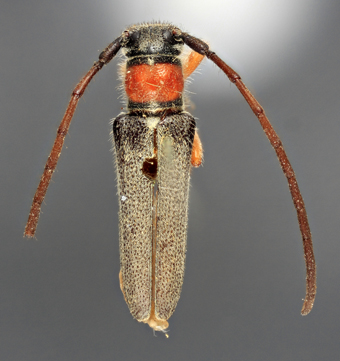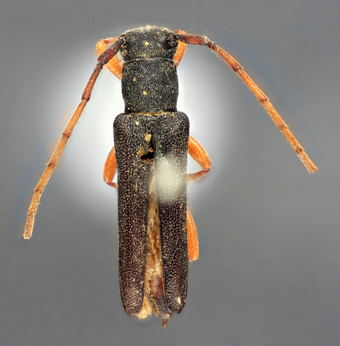|
Phytoeciini Classification
Selected References to Larvae Specimens |
 Blepisanis melanocephala (Fabricius, 1787); dorsal holotype specimen Cerambycidae:Lamiinae:Phytoeciini Photograph © E.H. Nearns  Phytoecia flavipes (Fabricius, 1801); dorsal holotype specimen Cerambycidae:Lamiinae:Phytoeciini Photograph © E.H. Nearns |

